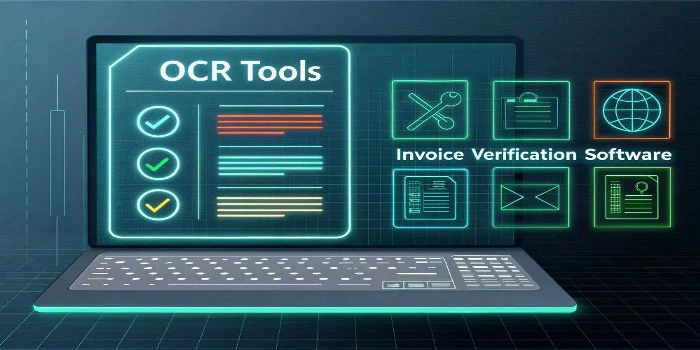20-22 Wenlock Road, LONDON, N1 7GU
20-22 Wenlock Road, LONDON, N1 7GU

Businesses today are increasingly automating their financial workflows to reduce errors, improve efficiency, and maintain compliance. Two commonly used tools in this process are invoice verification software and OCR (Optical Character Recognition) tools. While they may seem similar on the surface, they serve different purposes and deliver different levels of value.
In this article, we’ll break down what each tool offers and help you decide which one is better suited for your organization’s invoice processing needs.
Invoice Verification are type of software that automates the validation of invoice data against purchase orders, contracts, and delivery receipts. It ensures that payments are made only when the invoice details match predefined criteria, such as the right price and quantity. By reducing manual checks, it minimizes the risk of human error and fraud.
OCR tools are designed to read and convert scanned documents or images into editable and searchable text. In the context of invoice processing, OCR is often used to extract data such as invoice numbers, amounts, and dates from paper or PDF invoices.
While useful for digitizing documents, OCR by itself doesn’t verify or validate the information it captures.
Once you understand what these tools do individually, it’s easier to evaluate their strengths and limitations across key areas of functionality.
OCR tools can struggle with accuracy, especially when dealing with varied formats, poor-quality scans, or handwritten content. They extract information but do not validate it.
In contrast, invoice verification software cross-checks invoice details against purchase orders and delivery receipts. This verification step drastically reduces the likelihood of duplicate payments or billing errors.
OCR tools typically serve as the first step in a larger process. After extracting the data, you still need to manually verify it or use other systems to continue processing.
On the other hand, invoice verification solutions often include workflow automation features. This means invoices can be routed automatically for approval, flagged for exceptions, and archived—all with minimal manual intervention.
OCR tools generally work independently and require custom integration with ERP or accounting platforms. This can make the setup process more time-consuming and complex.
Most invoice verification software platforms are built to integrate seamlessly with popular systems like SAP, Oracle, and QuickBooks, enabling a smoother and more connected workflow.
As invoice volumes grow, manual oversight with OCR-based processes becomes more burdensome. Errors can pile up, and processing speed slows down.
Invoice verification platforms are designed to scale with your business. Whether you process hundreds or thousands of invoices each month, the system can handle it with minimal changes to your process.
OCR tools may appear cost-effective initially due to their simplicity. However, they often require additional manual effort and tools for validation and approval, which increases costs over time.
Investing in invoice verification software can lead to better long-term returns by cutting down on manual labor, reducing payment errors, and speeding up the entire accounts payable process.
Though OCR tools play an important role in digitization, businesses aiming to improve overall efficiency usually benefit more from end-to-end automation.
With real-time matching and rule-based validation, invoice verification systems reduce human error and ensure that all payments are compliant with company policies.
Automating repetitive tasks such as data matching, approvals, and exception handling frees up staff time and shortens the invoice cycle.
These platforms often include full audit trails and reporting features, making it easier to prepare for compliance checks or internal audits.
Faster and more accurate invoice processing leads to timely payments, which can help maintain positive relationships with your suppliers.
Both OCR tools and invoice verification solutions have their place in modern finance departments. OCR is useful for extracting data, but it lacks the intelligence and validation capabilities required for reliable, scalable processing.
If your goal is to streamline workflows, reduce errors, and handle higher invoice volumes with less manual intervention, investing in invoice verification software makes the most sense.
It’s not just about extracting data—it’s about verifying, automating, and optimizing the entire invoice management lifecycle.
OCR tools focus on extracting data from documents, while invoice verification software goes a step further by validating that data and automating the entire invoice processing workflow.
Some platforms include built-in OCR, but many are designed to integrate with external OCR tools. The key strength lies in the software’s ability to verify and process the extracted data.
Initially, yes. However, invoice verification software often proves more cost-effective in the long run due to time savings and reduced error rates.
Yes. Many businesses use OCR to extract data from invoices and then feed that data into a verification system for further processing and approval.
Growing businesses that handle increasing invoice volumes should consider invoice verification software for its scalability, accuracy, and automation capabilities.